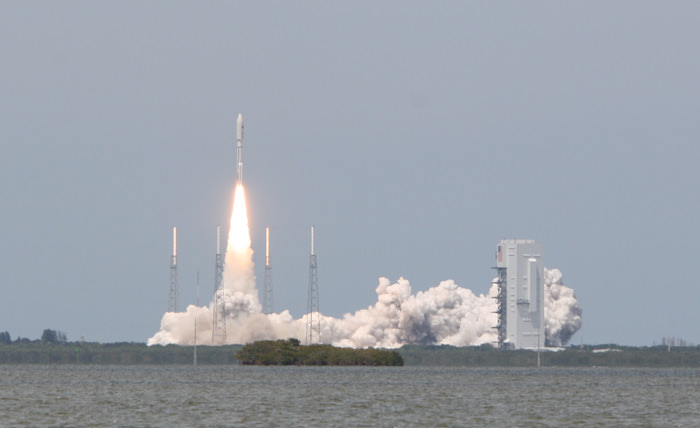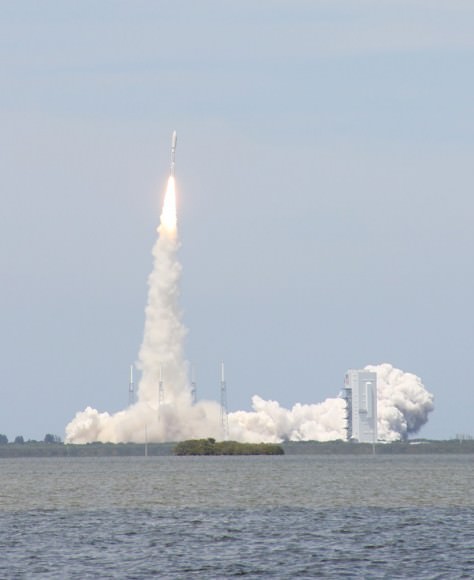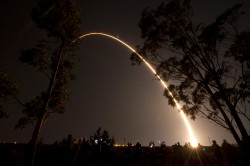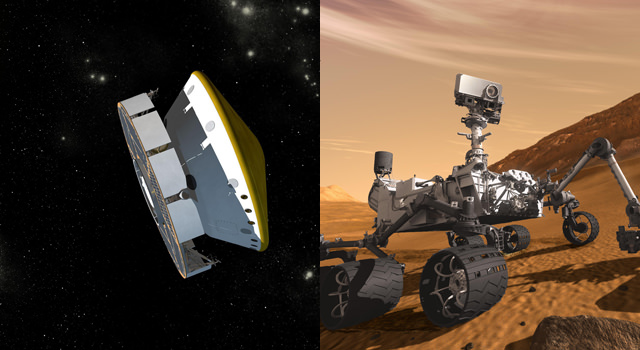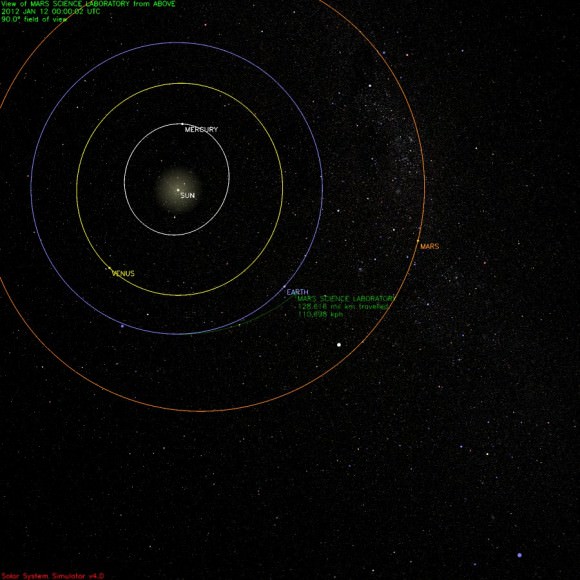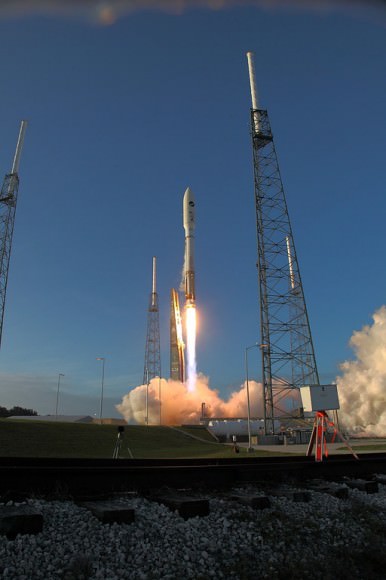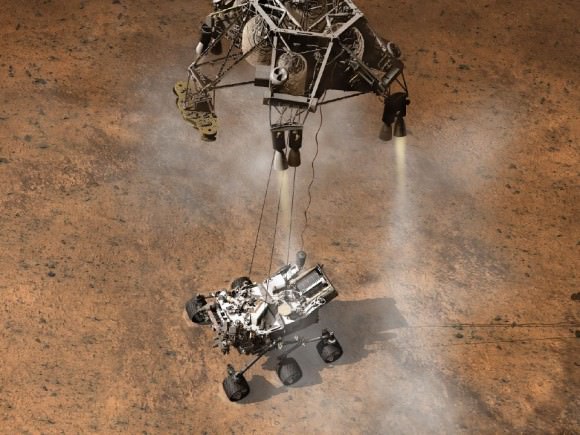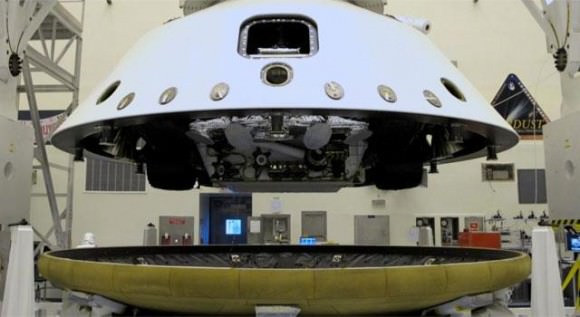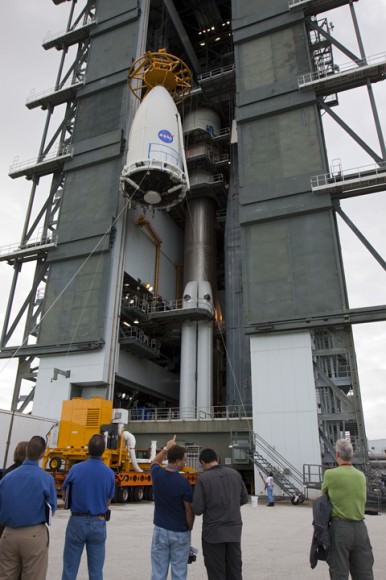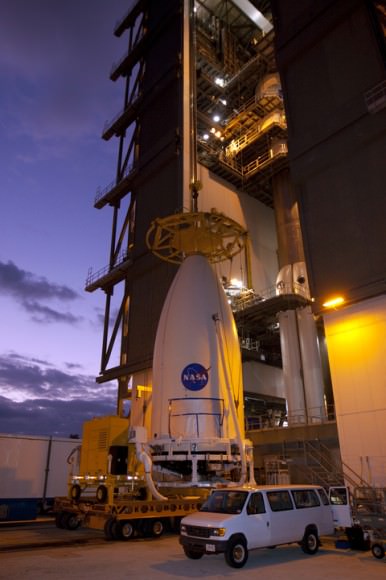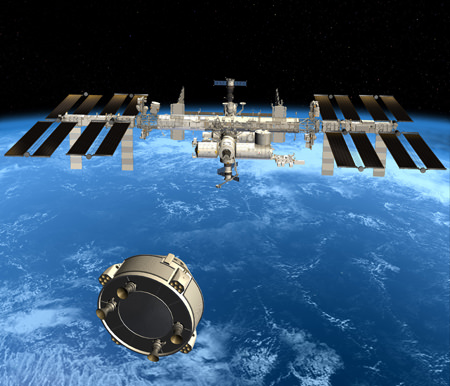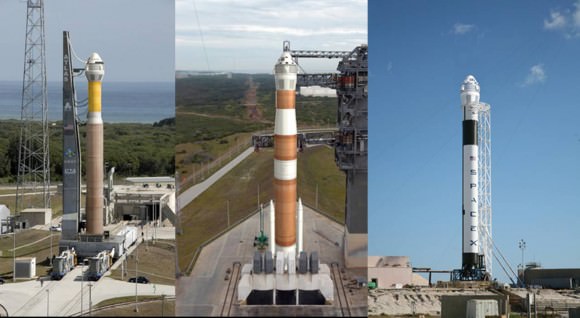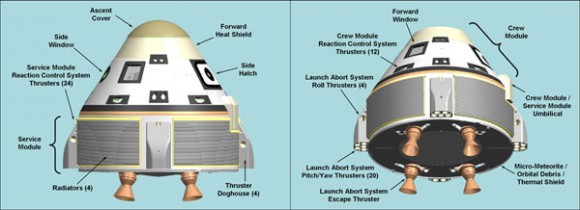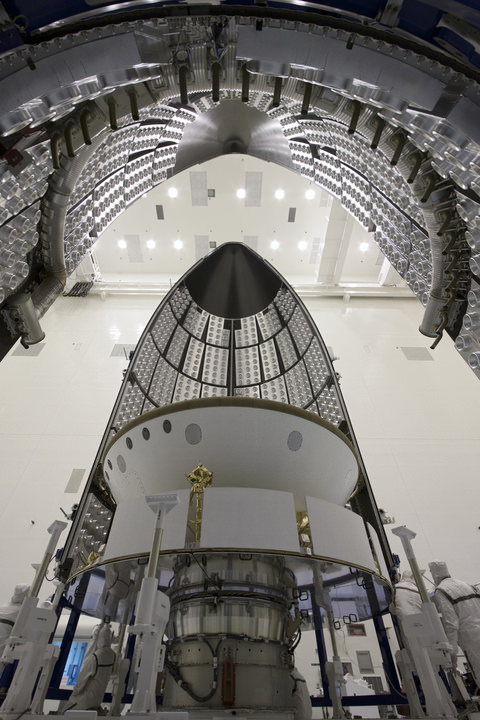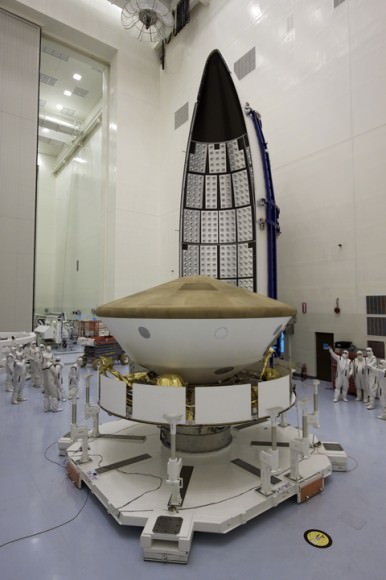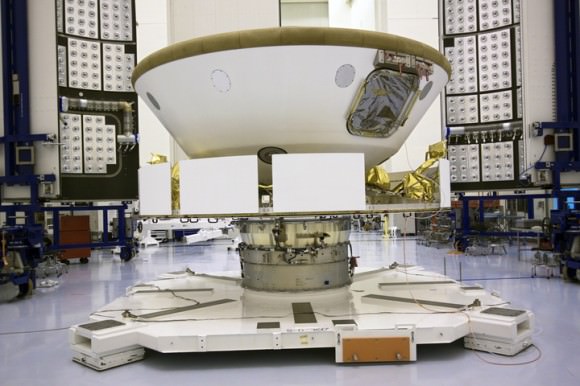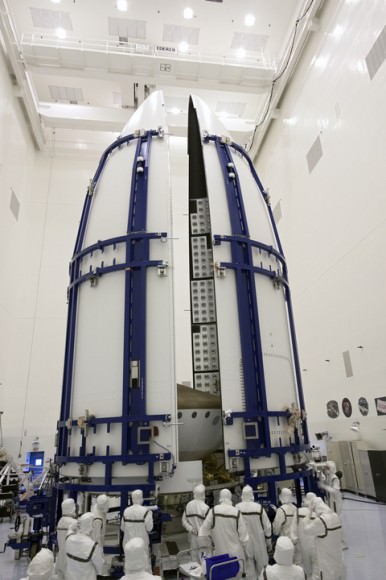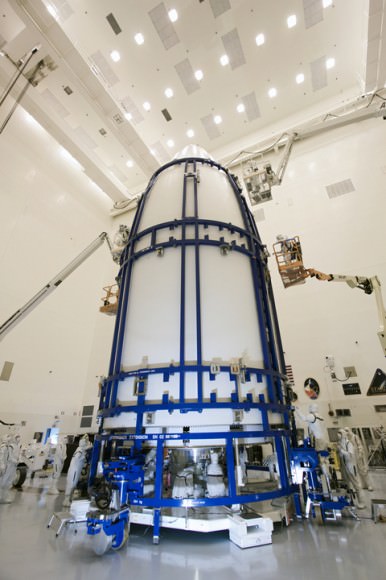Image Caption: NASA’s Mars Odyssey will relay near real time signals of this artist’s concept depicting the moment that NASA’s Curiosity rover touches down onto the Martian surface. NASA’s Mars Reconnaissance Orbiter (MRO) and ESA’s Mars Express (MEX) orbiter will also record signals from Curiosity for later playback, not in real time. Credit: NASA
It’s now just T minus 9 Days to the most difficult and complex Planetary science mission NASA has ever attempted ! The potential payoff is huge – Curiosity will search for signs of Martian life
The key NASA orbiter at Mars required to transmit radio signals of a near real-time confirmation of the August 5/6 Sunday night landing of NASA’s car sized Curiosity Mars Science Lab (MSL) rover is now successfully in place, and just in the nick of time, following a successful thruster firing on July 24.
Odyssey will transmit the key signals from Curiosity as she plunges into the Martian atmosphere at over 13,000 MPH (21,000 KPH) to begin the harrowing “7 Minutes of Terror” known as “Entry, Descent and Landing” or EDL – all of which is preprogrammed !
Engines aboard NASA’s long lived Mars Odyssey spacecraft fired for about 6 seconds to adjust the orbiters location about 6 minutes ahead in its orbit. This will allow Odyssey to provide a prompt confirmation of Curiosity’s landing inside Gale crater at about 1:31 a.m. EDT (531 GMT) early on Aug. 6 (10:31 p.m. PDT on Aug. 5) – as NASA had originally planned.
Without the orbital nudge, Odyssey would have arrived over the landing site about 2 minutes after Curiosity landed and the signals from Curiosity would have been delayed.
A monkey wrench was recently thrown into NASA relay signal plans when Odyssey unexpectedly went into safe mode on July 11 and engineers weren’t certain how long recovery operations would take.
“Information we are receiving indicates the maneuver has completed as planned,” said Mars Odyssey Project Manager Gaylon McSmith of NASA’s Jet Propulsion Laboratory, Pasadena, Calif. “Odyssey has been working at Mars longer than any other spacecraft, so it is appropriate that it has a special role in supporting the newest arrival.”
Odyssey has been in orbit at Mars since 2001 conducting orbital science investigations.
Read my review article on Odyssey’s science discoveries – here
Odyssey serves as the primary communications relay for NASA’s other recent surface explorers – Opportunity, Spirit and Phoenix. Opportunity recently passed 3000 Sols of continuous operations.
Two other Mars orbiters, NASA’s Mars Reconnaissance Orbiter and the European Space Agency’s Mars Express, also will be in position to receive radio transmissions from the Mars Science Laboratory during its descent. However, they will be recording information for later playback, not relaying it immediately, as only Odyssey can.
“We began optimising our orbit several months ago, so that Mars Express will have an orbit that is properly “phased” and provides good visibility of MSL’s planned trajectory,” says Michel Denis, Mars Express Spacecraft Operations Manager.
Mars Express has been orbiting the planet since December 2003.
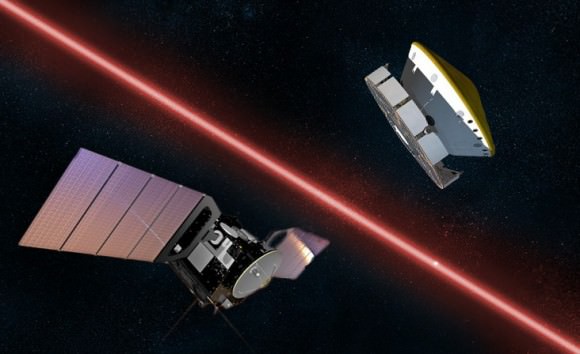
Image Caption: Mars Express supports Curiosity MSL. Credit: ESA
“NASA supported the arrival of Mars Express at Mars in 2003, and, in the past few years, we have relayed data from the rovers Spirit and Opportunity,” says ESA’s Manfred Warhaut, Head of Mission Operations.
“Mars Express also tracked the descent of NASA’s Phoenix lander in 2008 and we routinely share our deep space networks.
“Technical and scientific cooperation at Mars between ESA and NASA is a long-standing and mutually beneficial activity that helps us both to reduce risk and increase the return of scientific results.”
Watch NASA TV online for live coverage of Curiosity landing: mars.jpl.nasa.gov or www.nasa.gov




